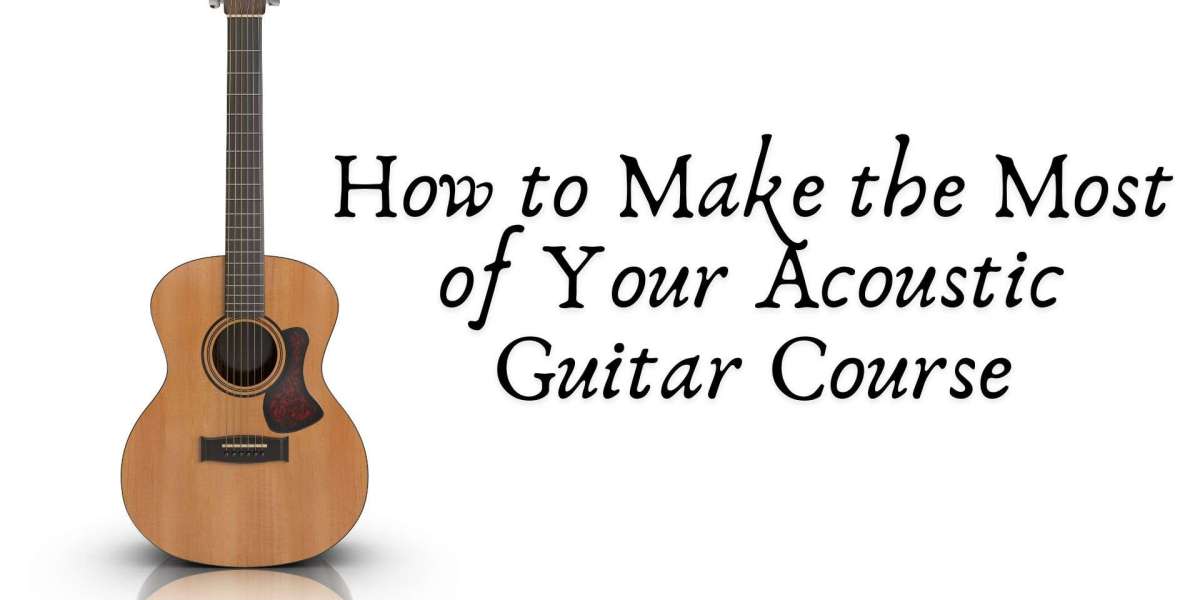Learning to play the acoustic guitar can be an incredibly rewarding experience, but to get the most out of your course, you need the right approach. Whether you’re taking an online class, attending a workshop, or working with a private instructor, maximizing your learning experience will help you develop your skills faster and more effectively. Here’s a comprehensive guide to making the most of your acoustic guitar course.
Set Clear Goals
Before starting your course, determine what you want to achieve. Are you looking to strum a few simple songs, become proficient in fingerpicking, or master advanced techniques? Setting clear goals will help you stay motivated and measure your progress.
Examples of Goals:
- Learn to play five complete songs within three months
- Master basic chords and transitions within six weeks
- Develop fingerpicking skills for folk and blues music
- Understand music theory and apply it to the guitar
Choose the Right Course
Different guitar courses cater to different skill levels and musical styles. Research and choose a course that aligns with your interests and current skill level. Look for courses that provide structured lessons, quality video instruction, and interactive components like exercises and feedback from instructors.
Things to Consider:
- Course format (online, in-person, group, or one-on-one lessons)
- Instructor credentials and teaching style
- Course content (chord progressions, scales, strumming patterns, etc.)
- Student reviews and testimonials
Establish a Consistent Practice Routine
Regular practice is key to improvement. Set aside dedicated time each day to work on lessons, drills, and songs. Even 20–30 minutes of focused practice can lead to significant progress over time.
Effective Practice Tips:
- Warm up with finger exercises and scales
- Focus on challenging sections instead of playing everything at once
- Use a metronome to develop a strong sense of timing
- Record yourself to track progress and identify areas for improvement
Engage with the Learning Material
Passively watching lessons won’t make you a better player—you need to actively engage with the content.
Ways to Stay Engaged:
- Take notes on key concepts and techniques
- Pause videos and practice new techniques before moving on
- Follow along with provided sheet music or tablature
- Participate in student forums and discussion groups
Learn Music Theory Basics
While it’s possible to learn songs by ear or by copying tabs, understanding music theory will greatly enhance your playing.
Essential Music Theory Topics:
- Major and minor scales
- Chord construction and progressions
- Time signatures and rhythm patterns
- Key signatures and how they relate to chord progressions
Apply What You Learn to Songs
The best way to reinforce your learning is by applying new techniques to actual music. Choose songs that match your skill level and gradually increase the difficulty.
Song Selection Tips:
- Start with simple three-chord songs (e.g., "Knockin’ on Heaven’s Door")
- Progress to fingerpicking patterns (e.g., "Blackbird" by The Beatles)
- Experiment with different strumming techniques and genres
Play Along with Others
Playing with other musicians helps improve timing, rhythm, and overall confidence.
Ways to Play with Others:
- Join a local jam session or online group
- Play along with backing tracks
- Collaborate with friends or fellow students
- Perform in small gatherings or open mic nights
Take Advantage of Additional Resources
Expand your learning beyond the course by exploring extra materials.
Useful Resources:
- YouTube tutorials and play-along videos
- Guitar apps (e.g., Ultimate Guitar, Fender Play, Justin Guitar)
- Books on guitar techniques and music theory
- Online forums like Reddit’s r/guitar or Ultimate Guitar community
Stay Patient and Enjoy the Process
Learning guitar takes time, and progress may feel slow at times. Stay patient, celebrate small wins, and most importantly, enjoy the journey of making music.
Mindset Tips:
- Avoid comparing yourself to advanced players
- Break down difficult sections into manageable parts
- Reward yourself for achieving milestones
- Keep experimenting with new techniques and songs
Conclusion
Making the most of your acoustic guitar course requires dedication, structured practice, and a love for learning. By setting clear goals, practicing consistently, engaging with the material, and applying what you learn, you’ll develop your skills effectively. Whether you’re a complete beginner or looking to refine your technique, following these tips will help you maximize your learning experience and enjoy playing the acoustic guitar to its fullest.


